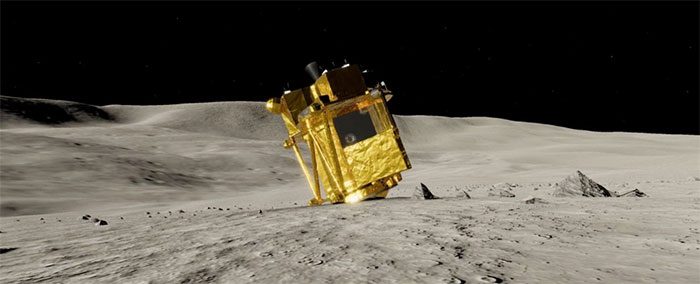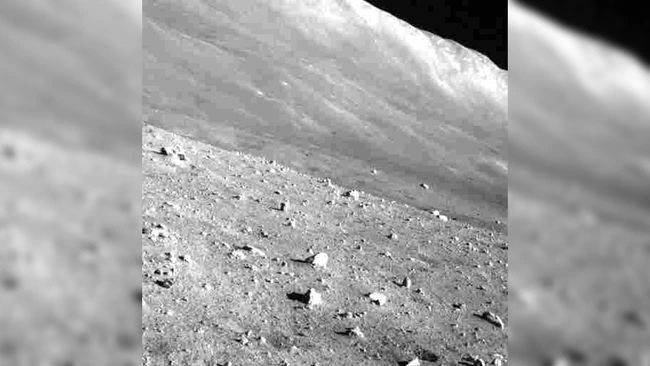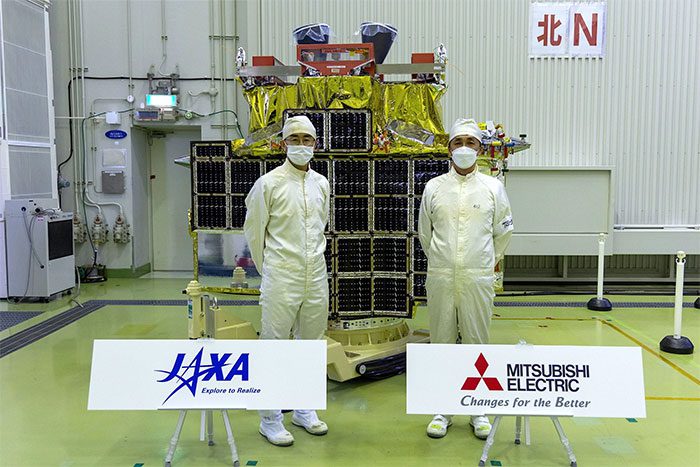The SLIM spacecraft continues to amaze the scientific community with its ability to overcome challenge after challenge.
Unlike Earth, the night on the Moon presents a significant challenge for all human exploration efforts. Temperature is the primary concern, as it can drop to a chilling -253⁰C, colder than some planets like Pluto.
For spacecraft not equipped with special heating systems, survival through the harsh lunar night is impossible. However, somehow, there are spacecraft that have managed to overcome this challenge.
The Japanese unmanned lunar explorer (SLIM) is one of these, having successfully survived not just one, but two harsh nights on the Moon. On Twitter, scientists have referred to this as a “miracle”, especially since the spacecraft was not in the best condition and lacked specific systems to protect it from the extreme temperatures.
SLIM is still alive

This update was shared by the Japan Aerospace Exploration Agency (JAXA) on their official page. Mission team members announced this news in a post along with a photo taken by the spacecraft’s navigation camera as evidence.
Previously, SLIM successfully landed on the Moon for the first time on January 19. Almost immediately, the spacecraft faced its first challenge when it tipped over and nearly flipped due to an unexpected landing process.
This incident caused the solar panels to misalign, preventing the spacecraft from generating the required energy. Nevertheless, SLIM was still able to deploy rovers for scientific research.
As night fell, the spacecraft entered a standby mode. At this point, few believed in its chances of survival. This was because the spacecraft was not designed to endure the frigid lunar night, which lasts up to two weeks.
A miracle occurred when the Sun’s angle changed, causing the spacecraft to “come back to life,” allowing it to continue scientific observations of the crater where it landed using a high-resolution camera.

Japan’s SLIM lunar explorer captured this image of its landing site shortly after surviving the second lunar night. The mission team shared the photo on March 27 (Photo: JAXA).
The spacecraft also responded to signals from JAXA engineers, indicating that its communication functions were still operating normally despite enduring the cold lunar night.
International experts are in awe of Japan as their spacecraft demonstrates extraordinary survival capabilities on the Moon, even after encountering issues that nearly all spacecraft would dread.
By March 28, SLIM continued to surprise everyone by surviving its second night on the Moon.
“We have received feedback from SLIM, confirming that the spacecraft has survived the second lunar night. As the Sun is still high and the equipment remains warm, we have only taken a few ordinary landscape photos with the navigation camera,” the JAXA mission team stated.
According to the data received, some temperature sensors and batteries on the spacecraft have started to malfunction, but most functions that remained after the first lunar night have been maintained even after the second night.
Now that the scientific missions have been completed, any additional days SLIM can survive will be recorded as “unprecedented achievements” and may provide valuable lessons for future missions.
Surviving the lunar night: A challenge that has puzzled scientists for decades

The lunar day/night cycle (or lunar month) in most areas on the surface consists of 14 days of sunlight followed by 14 days of continuous and frigid darkness.
Due to the lack of a temperate atmosphere, surface temperatures on the Moon can fluctuate from 120⁰C during the day to -180⁰C at night. In some permanently shadowed regions (PSR) on the Moon, temperatures can drop to below -240⁰C.
All these pros and cons combine to create one of the harshest environmental challenges that future lunar exploration missions will face.
To overcome this and achieve long-term habitation, any living organisms or machinery must confront the Moon’s extreme environment.
Dean Eppler, a lunar scientist at NASA, noted that surviving the harsh lunar night is a key issue if we want to stay on the Moon for more than two weeks (the duration of the lunar day).
Accordingly, taking refuge, such as staying at bases or shutting down equipment during this time, can still be the best decisions for scientific operations and survival.
This is also the strategy used by many spacecraft not equipped with Radioisotope Heating Units (RHU). Notable examples are Japan’s SLIM and India’s Chandrayaan-3.

SLIM was not equipped to survive the harsh lunar night. (Photo: JAXA).
Typically, RHUs used in space missions convert heat produced from the natural decay of radioactive isotopes like plutonium or polonium into electrical energy.
This process ultimately warms the spacecraft equipment or simply helps it survive in extremely cold temperatures.
If not equipped with this component, it would be a significant question whether the spacecraft could “wake up” when the night passes, as many essential parts for operational processes could freeze.
Fortunately, we have made the necessary preparations.
According to Noah Petro, a scientist from NASA’s Goddard Space Flight Center, thanks to environmental regeneration technologies (such as temperature, radiation…), humanity has matured in understanding the technical requirements for operating through the lunar night.
The technology team for the Artemis mission is working tirelessly to address the challenges astronauts face during the lunar night.
They have successfully developed materials for suits that can withstand pressure, do not freeze or break. Additionally, they ensure that the upper parts of the suit system do not become so hot that they cause significant thermal stress for crew members.
In addition to the main suit, other components like gloves, boots, backpacks, and mobile life support systems will all have special designs to maintain operational capability.
Now, perhaps all we need is a mission that can demonstrate and apply all this knowledge to make history.




















































